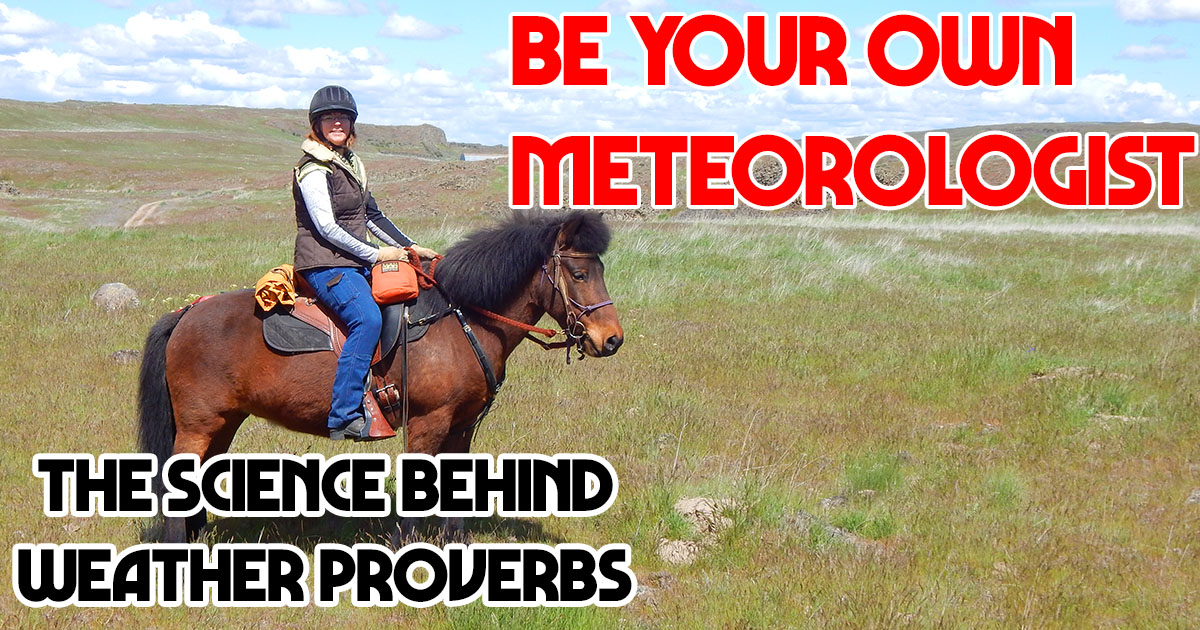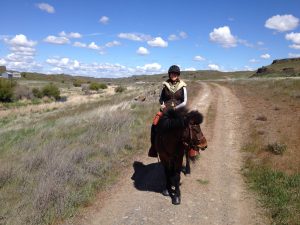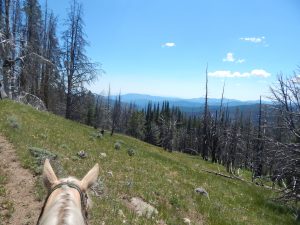Be Your Own Meteorologist – Clouds and the Science Behind Weather Proverbs
Some days, it seems like the weather has gone crazy. It often feels like it’s hard to predict what kind of weather we might have this afternoon, let alone tomorrow or next week. Fortunately there’s a lot of info we can gleam for ourselves just by looking up! Yes! You can Be Your Own Meteorologist! Clouds can provide accurate indicators of the weather to come. And if we know what to look for can tell us what kind of weather to be prepared for when we’re planning, on a trail ride, or while horse camping.
We’ve been attempting to forecast the weather since we crawled out of the sea. Long before the invention of modern meteorological tools, people relied upon “natural” clues to approaching weather. Many of these have a scientific basis and it can be explained why they work.
The first recorded use of weather folklore can be found in the Bible. In Matthew 16.2-3, Jesus says to the fishermen, “when it is evening, you say, ‘It will be fair weather, for the sky is red.’ and in the morning ‘It will be stormy today, for the sky is red and threatening”. Similar sayings include: “Red sky in morning, Sailors take warning. Red sky at night, Sailors’ delight.” And “Evening red and morning gray, help the traveler on his way.
Evening gray and morning red bring down a rain upon his head.”
Here’s the science behind those well-known sayings:
A red sky at night (when the sun is to the west) is caused by light passing through dust particles in the air to the west. Dust indicates dry weather and since most weather changes come from the west, a red sky at night usually indicates dry weather approaching. A red sky in the morning, however, indicates that the dry air has moved away. A gray sky at night means that the western air is filled with moisture and it will likely rain soon.
Here’s more weather rhymes and proverbs to remember as well as what the clouds tell us about the weather, to help you be your own meteorologist.
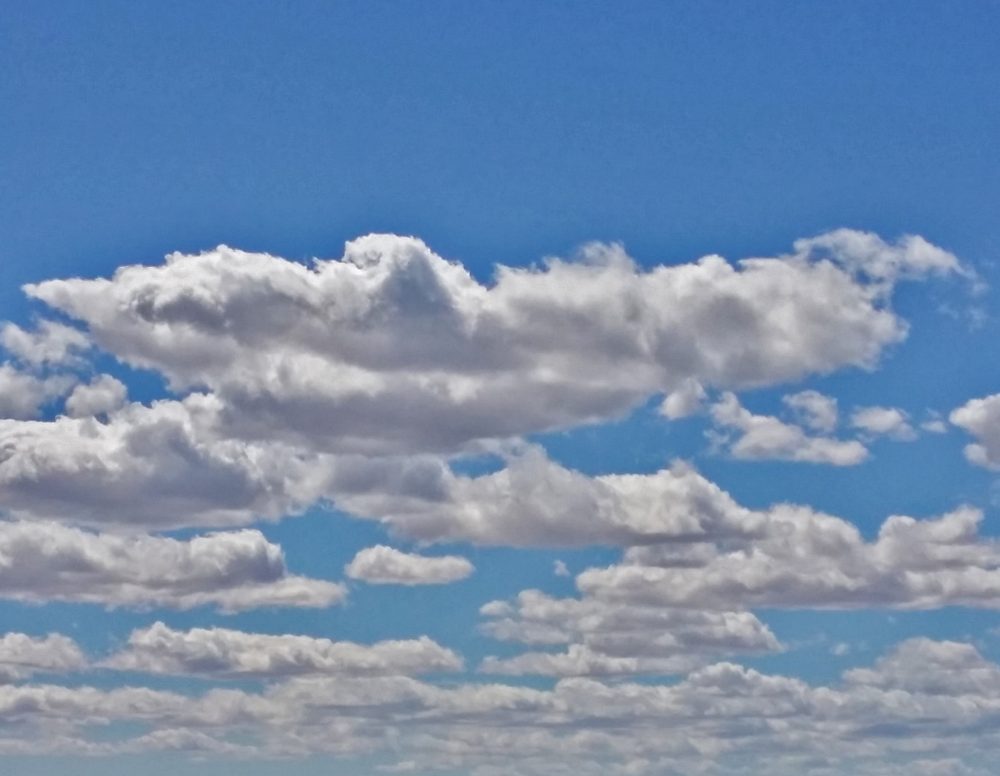
Cumulus Latin Derivative:”heap”
Throughout the world, one of the most favored clouds among people in the outdoors is the cumulus cloud. The puffy, fluffy, whimsical clouds add character to beautiful sunny days and are often associated with pleasant weather. When cumulus clouds are in view the forecast is as threatening as the mashed potatoes they resemble.
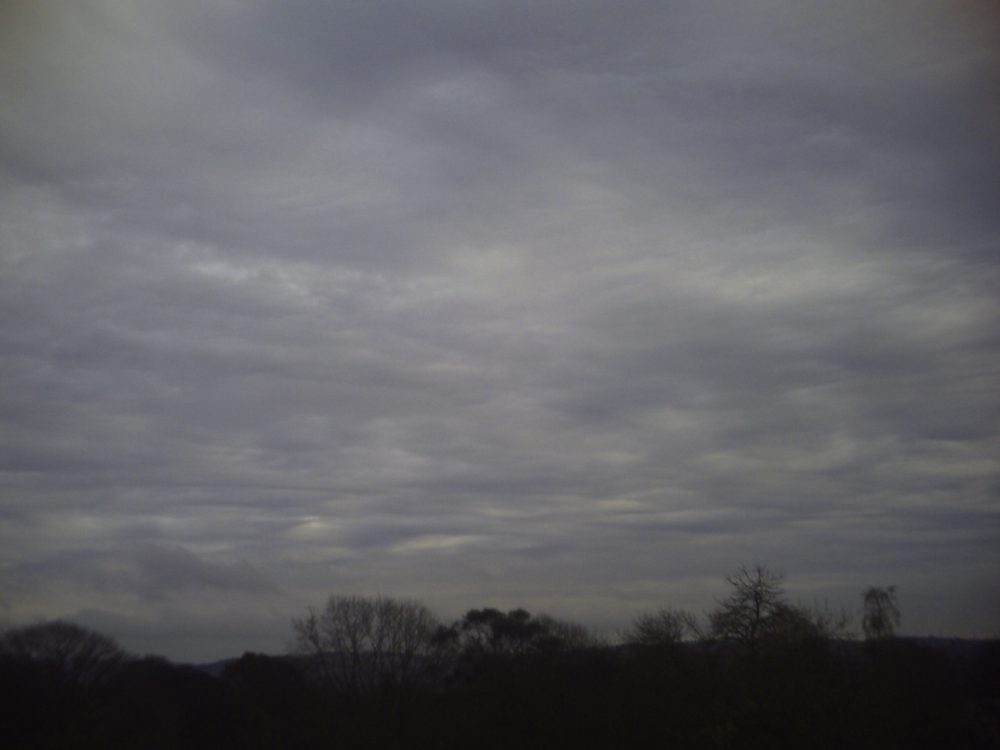
Stratus Latin Derivative: “layer”
Stratus clouds are flat and featureless and often completely blanket the sky on a gray day. These thick, heavy, gray clouds dominate the sky and the darker the shade of gray the higher the moisture content. While they usually don’t indicate extreme weather, be prepared for rain with this cloud type.
Rhymes to Remember: “Ring around the moon? Rain real soon.” Sailors have known for ages that a halo around the sun or moon is the harbinger of bad weather. A ring around the moon usually indicates an advancing warm front, which means precipitation. Likewise when you see a halo around the sun, you should expect rainy weather in a day or two. The clouds that create these halos are very high-altitude stratus clouds known as cirrostratus clouds. These clouds lack definition and usually appear from the ground as a thin haze. They are full of moisture, and when they arrive, lower-level stratus clouds usually aren’t far behind.

Cirrus Latin Derivative: “curl of hair”
These are the high, thin, wispy clouds that make for beautiful sunsets. Cirrus clouds live very high in the atmosphere and are made up of tiny ice crystals. They form ahead of warm fronts and can be indicative of upcoming precipitation. While cirrus clouds may filter sunshine and make for a beautiful day, don’t be fooled…they can indicate impending storms!
Rhymes to Remember: “Trace in the sky the painter’s brush, the winds around you soon will rush.” – “Mares’ tails make lofty ships carry low sails.”

Nimbus Latin Derivative: “violent rain”
Nimbus clouds can refer to any of the above clouds which have taken on a dark color, thus indicating high moisture levels within the cloud and rain to come. For example, a cumulonimbus cloud is a cumulus cloud that is uncharacteristically dark and foreboding, and is associated with thunderstorms. Cumulonimbus clouds often rise like towers into the sky and sometimes take the shape of an anvil, with the longer end of the anvil head typically pointing in the direction the storm is heading. So when rocks, towers, or anvils appear in the sky, expect storms.
Rhymes to Remember: “When clouds appear like rocks and towers, the earth is refreshed with frequent showers.”
I hope this short guide helps you to be your own meteorologist! As always for more information for your next trail ride or horse camping trip, including the world’s largest guide to horse trails and camps visit www.TrailMeister.com


